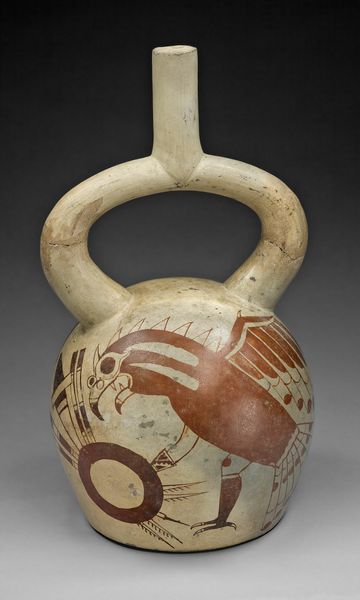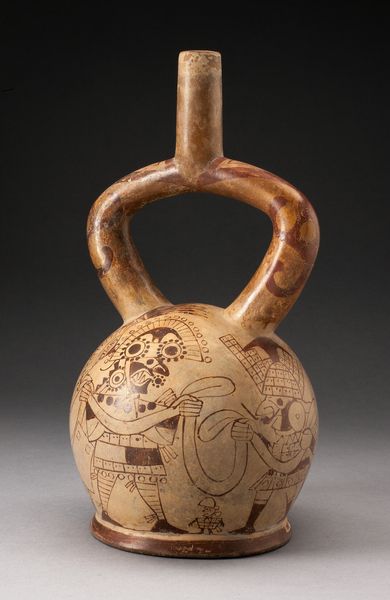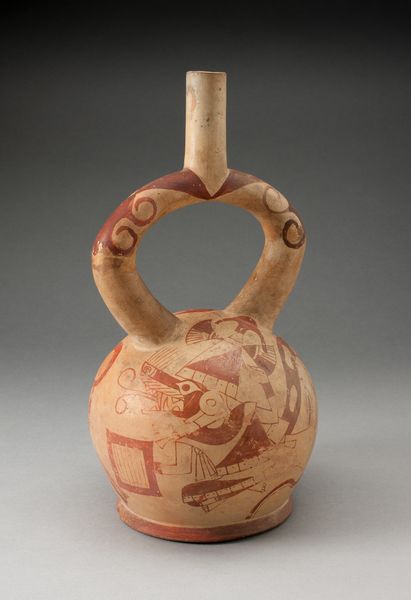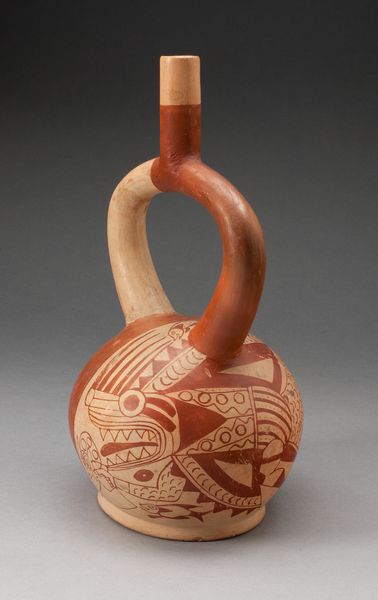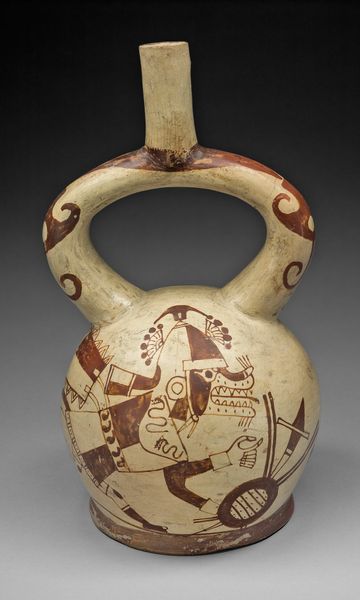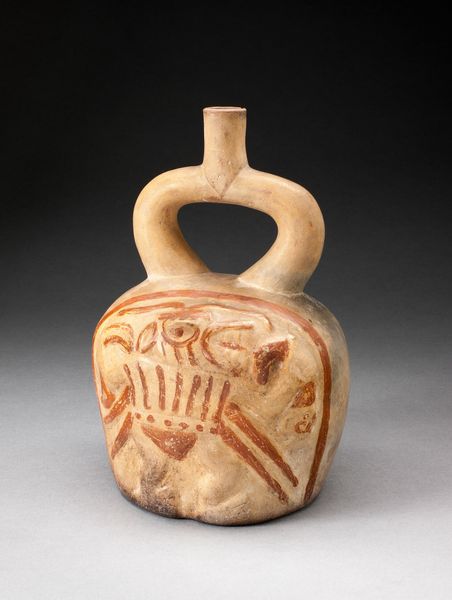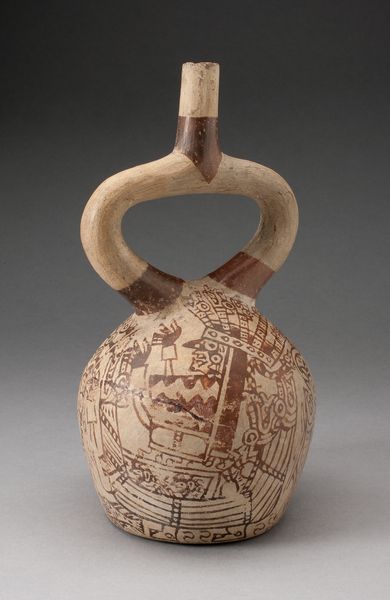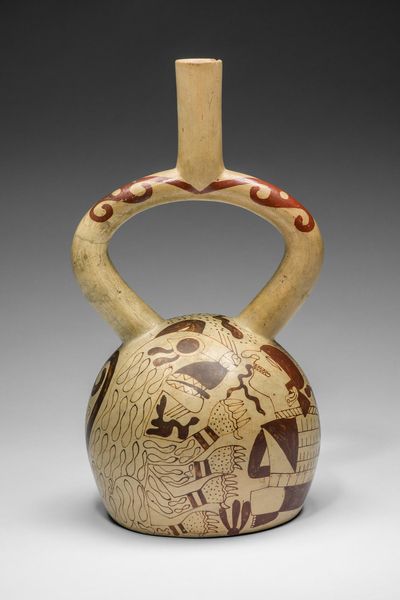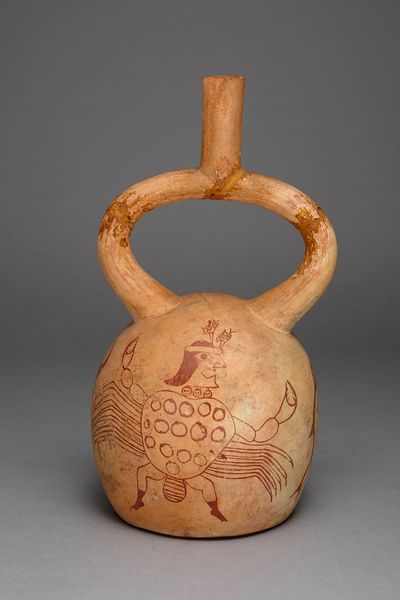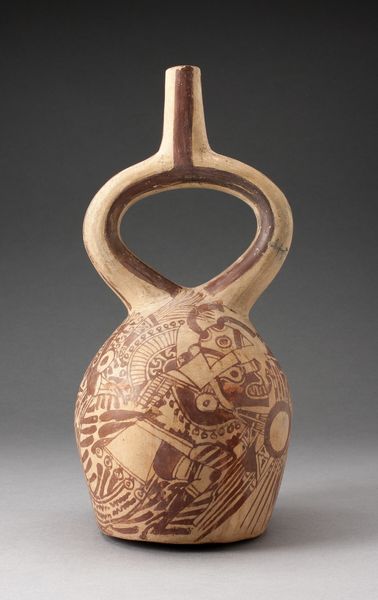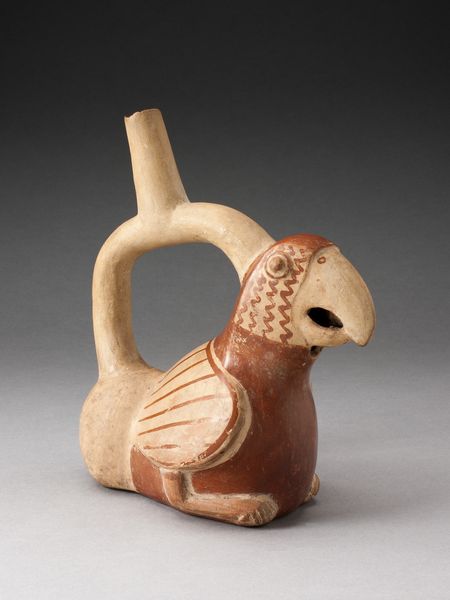
ceramic, terracotta
#
ceramic
#
figuration
#
form
#
terracotta
#
indigenous-americas
Dimensions: 11 1/8 x 5 x 5 in. (28.26 x 12.7 x 12.7 cm)
Copyright: Public Domain
Curator: This striking ceramic vessel, dating from the 5th to 6th century, is identified as a Stirrup-handle jar, crafted by the Moche people. You can find this piece at the Minneapolis Institute of Art. What are your first impressions? Editor: I'm immediately drawn to its narrative potential, the way it seems to be depicting a moment or story from the Moche world. I'm thinking about the significance of the avian figure featured on the side; it almost looks regal, adorned with what appears to be a crown, its purpose? Curator: Absolutely, and when considering process, we should think about the remarkable skill involved in ceramic production at this time. It must have involved extracting clay, molding the shape, carefully applying the design, and finally, firing the piece. And what about its use, beyond its artistic merit? Editor: Functionality and aesthetics intermingling, as is so often the case in these instances, especially given the prevalence of similar stirrup-handle vessels during that time period. Considering its place of origin in the Moche civilization, which prospered in the northern coast of what is now Peru, one wonders how class differences could have impacted design? Curator: Fascinating point. Given that we know ceramic production in the Moche culture was a highly skilled labor, reserved for certain artisans, its distribution must be connected to hierarchical structures. Looking closely at the painted design, consider the restricted palette, with its emphasis on creams and ochres. How was color attained, and from what raw materials? Editor: It could indicate the limitations of available resources or maybe even the deliberate cultural decision of these tones to imbue a sense of somber elegance to reflect specific values or beliefs. It prompts us to consider who these objects were meant for, who had access to them, and the narratives and cultural values they might have carried within a stratified society. Curator: Indeed. And remember, vessels of this nature also often served a ritualistic purpose in the Indigenous Americas—further connecting labor to religious power. What I see in this ancient Moche work isn't just artistry but ingenuity, culture, and the social matrix. Editor: Absolutely. Considering what it can tell us about resourcefulness, cultural stories, labor stratification, and even hierarchical identity—the interplay of the formal and symbolic elements opens up an important perspective.
Comments
No comments
Be the first to comment and join the conversation on the ultimate creative platform.
